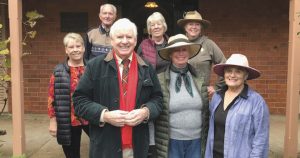[vc_row][vc_column width=”1/6″ offset=”vc_col-lg-1/5 vc_col-md-1/5 vc_col-xs-1/5″][us_image image=”81825″ size=”thumbnail” align=”left” style=”circle” has_ratio=”1″][/vc_column][vc_column width=”1/12″ offset=”vc_col-lg-4/5 vc_col-md-4/5 vc_col-xs-4/5″][vc_column_text]By Annette Madjarian[/vc_column_text][us_post_date][/vc_column][/vc_row][vc_row][vc_column][vc_column_text]The much-needed and anticipated expansion of Hornsby Ku-ring-gai Hospital is officially complete, with the $265 million redevelopment boasting a “super-sized” emergency department, rooftop helipad and Australia’s first public hospital robotic pharmacy.
Dubbed a first-class facility, the hospital will “cater for the needs of local residents now and into the future as the community continues to grow”, according to NSW Premier Dominic Perrottet.
“We are making the right investments in communities across the State to strengthen our frontline services so we can deliver what people need sooner and closer to home,” the Premier said.
NSW Health Minister Brad Hazzard said the expanded emergency department had already been put to the test during the Covid Omicron outbreak, and had provided safe, high-quality care to local residents.
He said the new emergency department was three times the size of the previous ED, featured purpose-built isolation rooms for infectious patients, and had a separate emergency unit for children.
“The entire facility is world-class, from the entrance, to the new outpatients department, intensive care unit, and the first public hospital robotic pharmacy in Australia,” the Health Minister said.
NSW Treasurer and Hornsby MP Matt Kean said the rooftop helipad would enable faster and safer medical transfers of critically ill patients.
The new Clinical Services Building includes:
• A combined Intensive Care and High Dependency Unit;
• Combined Respiratory/Cardiac and Coronary Care beds co-located with a Cardiac Investigations Unit;
• Ambulatory Care Centre (Outpatients Department);
• Medical Imaging;
• Paediatrics;
• Medical Assessment Unit;
• Inpatients Units (including general medicine, rehabilitation, stroke and dementia/delirium beds);
• Helipad; and • Co-located education space with The University of Sydney.
Further improvements are expected by the end of the year, in oral health, and community health services such as chemotherapy and renal dialysis.











